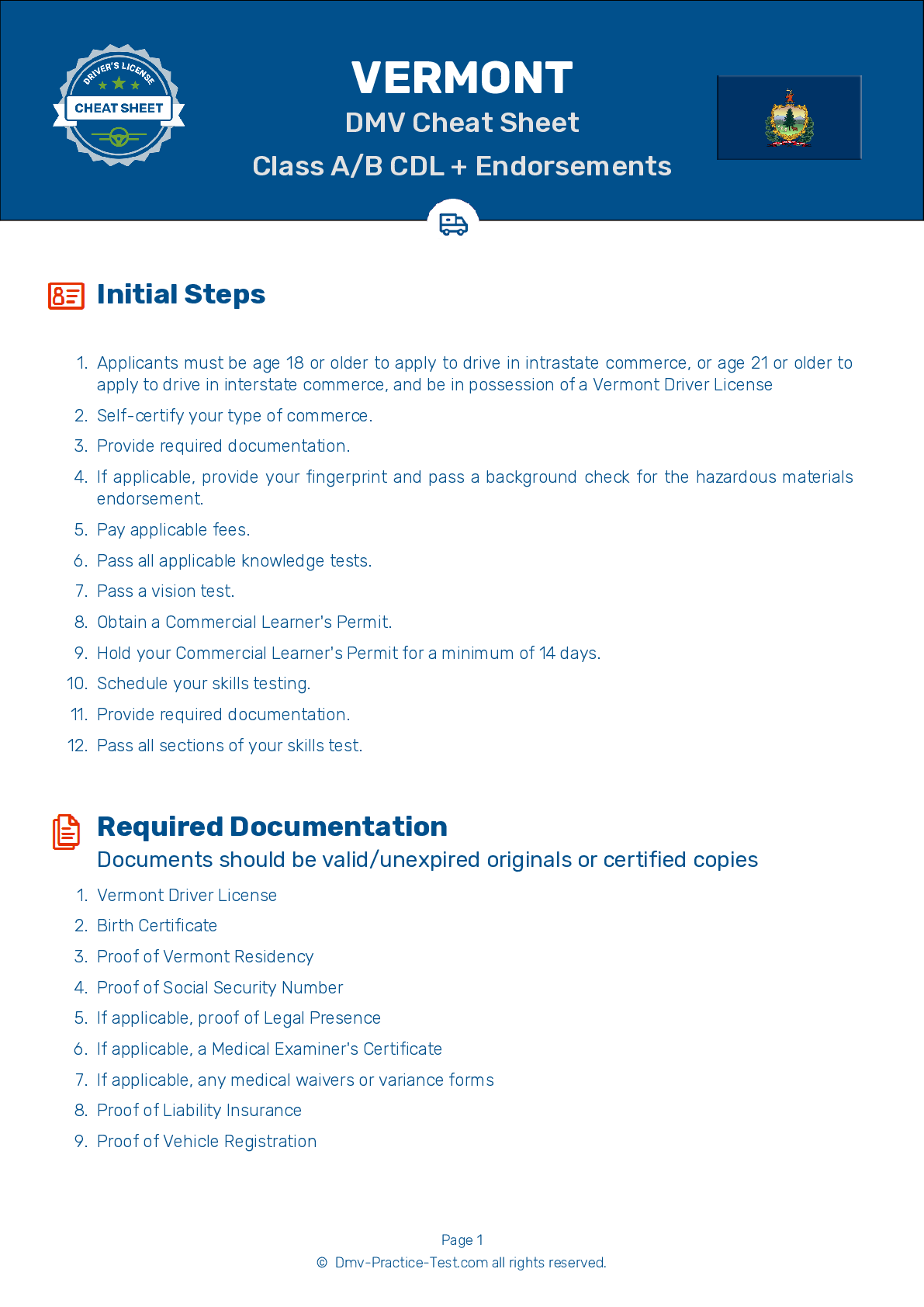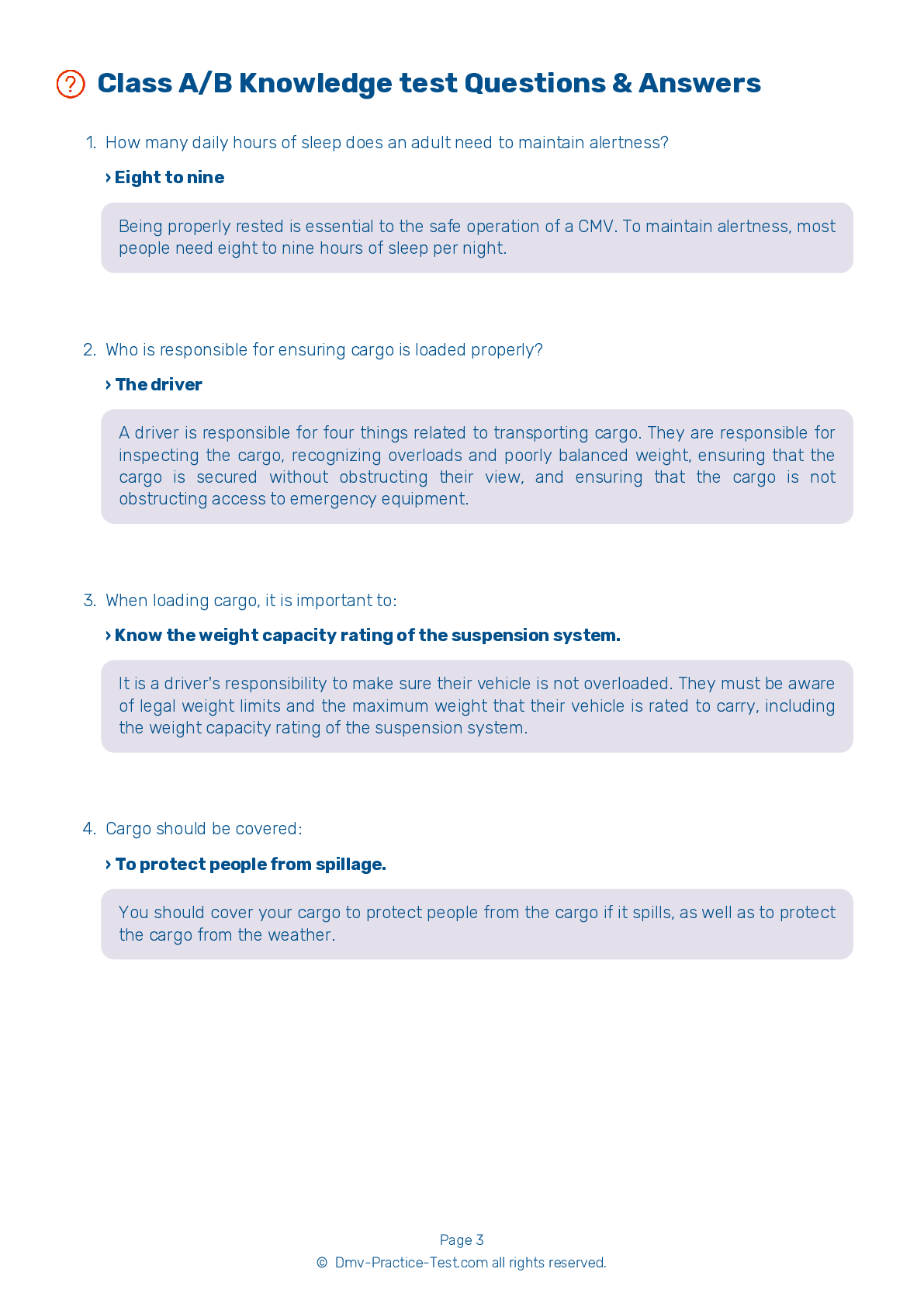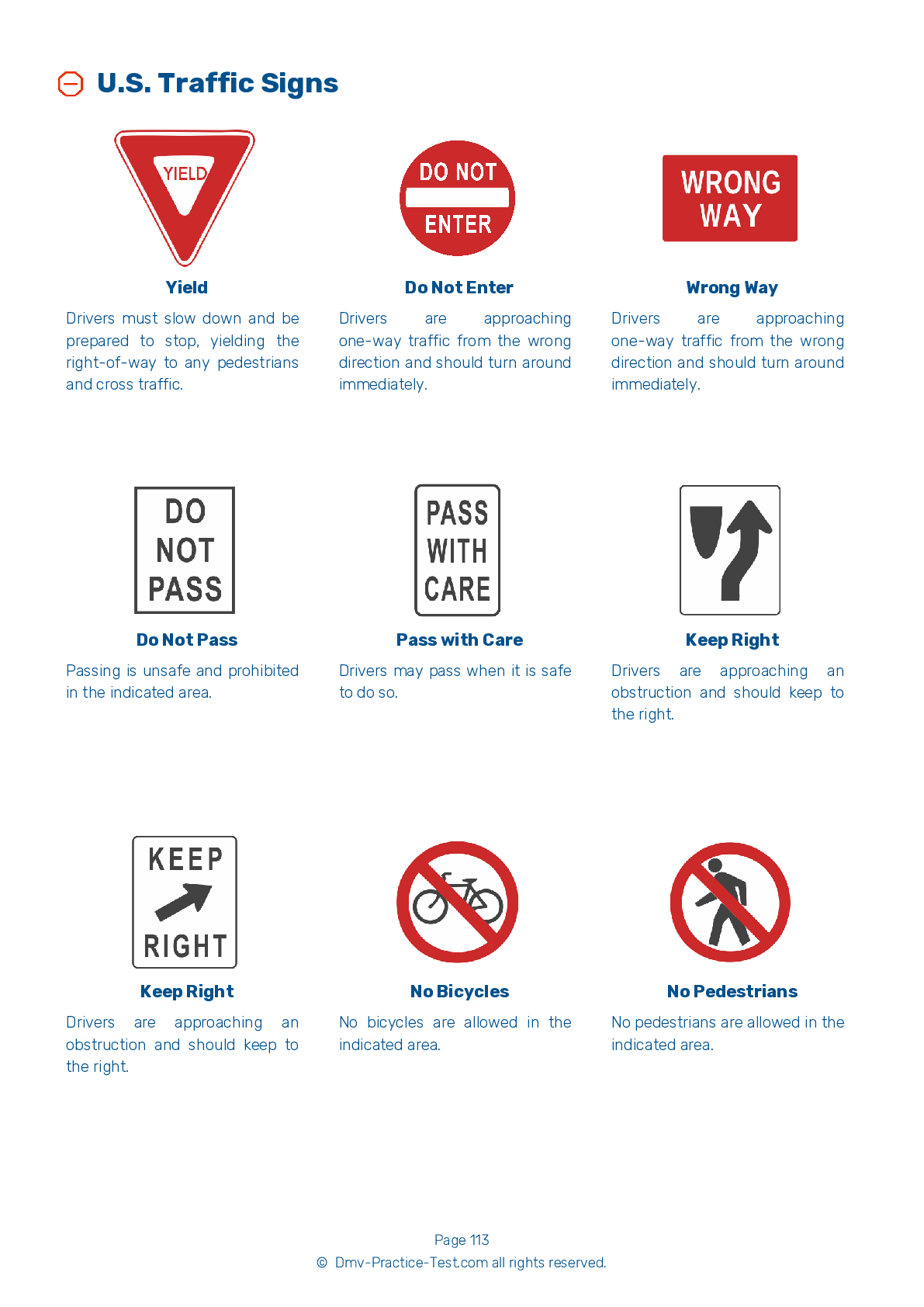Class A Driving Test | Vermont 2025 #2
Train for FREE online with our Vermont class A license test. The official exam test consists of several obligatory parts, with all of them checking your knowledge of different blocks of road rules. If you need to obtain a VT CDL class A permit in 2025, practice as much as possible. Free sample tests published on our website will help you check and improve your knowledge and boost your grades. Please bear in mind that CDL class A requirements may vary from state to state.
1 . While still below the legal limit, a driver operating a CMV with a detectable amount of alcohol in their system will:
If you are found to have any detectable amount of alcohol in your system while operating a CMV but your blood alcohol concentration (BAC) is still below the legal limit of 0.04 percent, you will be put out-of-service for 24 hours. It is both illegal and dangerous to operate a motor vehicle while under the influence of alcohol.
2 . When completing an offset back/left parking maneuver, a driver should:
If you are asked to complete an offset back/left parking maneuver, you should first pull straight forward, then back up to the left. Your vehicle must be parked completely within the boundaries of the parking space.
3 . When in heavy traffic, the safest driving speed is:
In heavy traffic, it is safest to travel at the same speed as other vehicles. If two vehicles continue to drive in the same direction at the same speed, they cannot hit each other.
4 . Before driving a power steering-equipped vehicle, you should make sure that:
When inspecting a vehicle that is equipped with power steering, check the hoses, pumps, and fluid level. In particular, you should look for leaks in the hoses.
5 . Interstate carriers must have what information affixed to both sides of a CMV?
Federal Motor Carrier Safety Regulations (FMCSR) require carriers to affix the USDOT number to both sides of each CMV in their fleet.
6 . What does a vehicle inspection report do?
Drivers may be required to submit a written vehicle inspection report at the end of each day of driving. The motor carrier must repair any items in the report that affect safety and certify on the report that repairs were either made or unnecessary.
7 . Foundation brakes are used:
Foundation brakes are used on each wheel of a CMV. The most common type of foundation brake is the s-cam drum brake.
See the exact questions that will be on the 2025 Vermont DMV exam.
99.2% of people who use the cheat sheet pass the FIRST TIME
Lillian MCcranie explains how our CDL study guide was helpful in passing the exam and recommends it to everyone.
Cameron tells us how he purchased the CDL exam, and found it to be a useful tool which helped him pass the exam and find a job.



